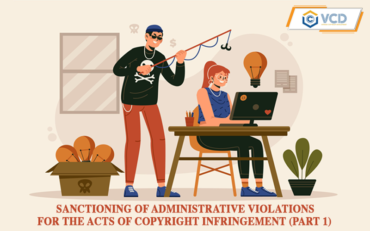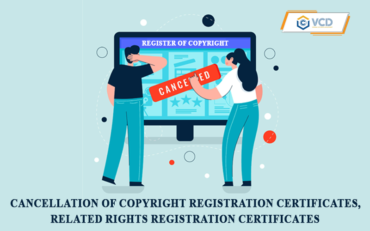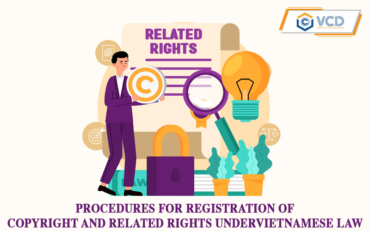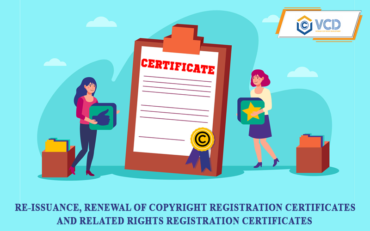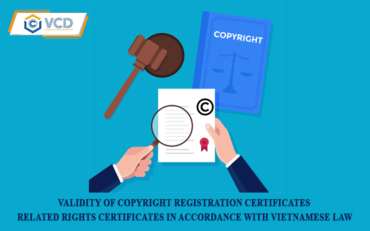Sanctioning of Administrative violations for the acts of copyright infringement
Acts of copyright infringement are administratively sanctioned according to Decree No. 131/2013/ND-CP stipulating on sanctioning administrative violations of copyright and related rights, as amended and supplemented by Decree No. 28/2017/ND-CP and Decree No. 129/2021/ND-CP (collectively referred to as “Decree 131”). Copyright owners should research Decree 131 before requesting competent state agencies to handle acts of copyright infringement. In this article, we will clarify the provisions of Decree 131 on Sanctioning of Administrative violations for the acts of copyright infringement
1. For some acts of copyright infringement
Note: The fine bracket outlined below applies to individuals. For the same violation stated below, the fine bracket for organizations is twice as much as that for individuals.
Article 8: Acts of transporting, and stockpiling the pirated goods
- A fine of between VND 3,000,000 and 5,000,000 shall be imposed for transporting goods produced without permission of the copyright or related right owners.
- A fine of between VND 5,000,000 and 10,000,000 shall be imposed for stockpiling goods produced without permission of the copyright or related right owners.
Remedial measures: Confiscation of material evidence.
Article 9: A fine of between VND 2,000,000 and 3,000,000 shall be imposed for using a work without indicating the real name or pen name of its author or its title or indicating a wrong real name or pen name of the author or a wrong title of the work on copies of the work, phonogram, video recording or broadcast program.
Remedial measures: Forcible correction publicly using mass media about false information; Forcible correction of the name of the author, the title of the work on copies of the work, phonogram, video recording, or broadcast program which contain false information about the name of the author, the title of the work.
Article 10: Acts of infringing upon the right to protect the integrity of works..
- A fine of between VND 3,000,000 and 5,000,000 shall be imposed for arbitrarily modifying or mutilating a work causing damage to the honor and prestige of the author.
- A fine of between VND 5,000,000 and 10,000,000 shall be imposed for distorting a work causing damage to the honor and prestige of the author.
Remedial measures: Forcible correction publicly using mass media about inaccurate information; Forcibly removing copies of the work which is infringed, in electronic form, on the network and digital environment, or forcible destruction of material evidence.
Article 11: A fine of between VND 5,000,000 and 10,000,000 shall be imposed for publishing the work without the permission of the copyright owners in accordance with regulations.
Remedial measures: Forcible correction publicly using mass media.
Article 12: A fine of between VND 5,000,000 and 10,000,000 shall be imposed for making derivative works without permission of the copyright owner.
Remedial measures: Forcibly removing copies of the work which is infringed, in electronic form, on the network and digital environment.
Article 13: Acts of infringing upon the right to allow performing the works to the public;
- A fine of between VND 5,000,000 and 10,000,000 shall be imposed for a live performance of a work to the public without permission of the copyright owners in accordance with regulations.
- A fine of between VND 10,000,000 and 15,000,000 shall be imposed for performance through audio or video-recorded programs or whatever technical means accessible by the public without permission of the copyright owner in accordance with regulations.
Remedial measures: Forcibly removing copies of phonograms, and video recordings, which are infringed.
Article 14: A fine of between VND 5,000,000 and 10,000,000 shall be imposed for renting originals or copies of cinematographic works or computer programs without the permission of the copyright owners in accordance with regulations.
Article 15: A fine of between VND 10,000,000 and 30,000,000 shall be imposed for distributing the works without permission of the copyright owners.
Remedial measures: Forcibly removing copies of the work which is infringed, in electronic form, on the network and digital environment, or forcible destruction of material evidence.
Article 16: A fine of between VND 200,000,000 and 250,000,000 shall be imposed for importing originals or copies of works without permission of the copyright owners in accordance with regulations.
Remedial measures: Enforced the re-export of material evidence. In case of failure to enforce the re-export of material evidence, the enforced destruction of material evidence shall be applied.
Article 17: A fine of between VND 15,000,000 and 30,000,000 shall be imposed for communicating a work to the public by wire or wireless means, an electronic information network, or any technical means without the permission of the copyright owner in accordance with regulations.
Remedial measures: Forcibly removing copies of the work which is infringed.
Article 18: A fine of between VND 15,000,000 and 35,000,000 shall be imposed for reproducing the works without permission of the copyright owners.
Remedial measures: Forcibly removing copies of the work which is infringed, in electronic form, on the network and digital environment, or forcible destruction of material evidence.
Article 19: A fine of between VND 10,000,000 and 15,000,000 shall be imposed for forging the signatures of authors on the works.
Remedial measures: Forcible destruction of material evidence.
Article 20: Acts of infringing upon the right to apply technological solutions to self-protect copyright
- A fine of between VND 3,000,000 and 5,000,000 shall be imposed internationally for deleting or modifying copyright management information in electronic form attached to the original or copies of a work.
- A fine of between VND 5,000,000 and 10,000,000 shall be imposed for intentionally canceling or deactivating technical and technological solutions applied by the copyright owner to protect the copyright to his/her work. The following remedial measures shall be applied: Enforced destruction of material evidence.
- A fine of between VND 10,000,000 and 20,000,000 shall be imposed for producing, assembling, mutating, distributing, importing, exporting, selling, or renting devices or system to deactivate technical and technological solutions applied by the copyright owner to protect copyright to his/her work. The following remedial measures shall be applied: Enforced the re-export of material evidence. In case of failure to enforce the re-export of material evidence, the enforced destruction of material evidence shall be applied.
Above is the article “Administrative penalties for copyright infringement (Part 1)“. Please follow Part 2 in our next post.

